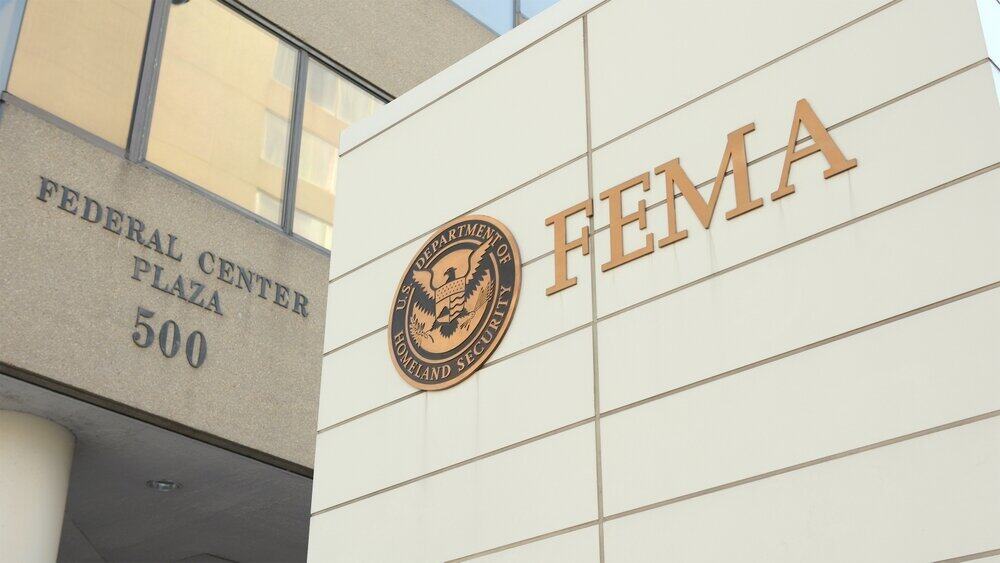2025 FEMA Cuts & Insurance Impact: What Consumers Need to Know
by Brian O’Connell
Cuts to the US government’s biggest disaster relief agency could spell trouble for insurance companies and consumers.
The U.S. Federal Emergency Management Authority seems like it’s on its last legs, with agency leaders cutting $1 billion in state and local grant funding, and with President Donald Trump’s plan to phase FEMA out completely later this year.

In March, President Trump signed an executive order calling for a complete overhaul at FEMA, and since then, the administration has taken stronger measures to cancel the agency completely. Presumably, Team Trump will move the federal disaster relief program, along with billions of dollars in funds, down to U.S. state and local governments.
The overhaul is likely to have a big impact on commercial and residential insurance, and the effect is likely immediate, as major weather events continue to stack up insurance-related losses.
“FEMA plays an essential role in disaster mitigation, preventing losses before they occur, and the USDA supports community resilience in forest management that are very important,” said Robert Gordon, senior vice president of policy, research and international for the American Property Casualty Insurance Association in a recent government hearing titled “Examining Insurance Markets and the Role of Mitigation Policies. “Those programs are essential for effective mitigation and cannot be easily replicated by the states or private industry.”
In his testimony, Gordon noted that US homeowners, in particular, would bear the brunt of government-backed disaster recovery budget reductions, as homeowners paid $1.11 in insurance claims for every $1 paid in claims in 2023.
“Homeowners insurance rates increased because homeowners’ losses increased even more,” Gordon said. “The primary cost factors were record inflation, even higher inflation for building materials, and more expensive buildings being built in disaster-prone areas.”
Insurance companies are unlikely to lead any industry efforts to mitigate FEMA budget cuts. According to ICF, a data analysis company, insured catastrophe losses globally reached $50 billion in the first quarter of 2025, making it the second-highest Q1 total on record.
Cracks Emerging In FEMA’s Foundation
Insurance industry experts say FEMA’s operating condition has been deteriorating in recent years, and insurers have tried to fill the breach. Take US farmers, who’ve suffered through hurricanes, wildfires, and floods, with little help from FEMA and insurers.
“The biggest issue farmers face is FEMA’s narrow coverage scope,” said Casey Love, founder of NY Farm Insurance Company, an independent insurance agency in Honeoye Falls, New York. “They don’t cover operational losses or specialized farm equipment.”
Love points out that when a client’s $200,000 combine was destroyed in flooding last year, FEMA covered maybe 30% while his farm insurance handled the rest. “Without proper farm coverage, he would’ve been bankrupt.”
As always in Washington D.C., funding, specifically the lack of it, is the primary problem. “For agricultural properties, standard flood insurance through FEMA caps at $500,000 for commercial structures, which doesn’t even cover one modern dairy barn,” Love said. “I’ve seen clients with $2 million in farm buildings find they’re massively underinsured when relying on federal programs alone.”
The larger problem is that when FEMA’s budget is cut, insurers step in, but at a higher price for customers.
“I’ve managed over $1 billion in Massachusetts property insurance and seen how FEMA cuts directly impact private insurance costs,” said Mikhail Kovalev, of Kovalev Insurance Agency Inc. in Newton, Mass.
“When FEMA reduces disaster relief funding, insurance carriers immediately recalculate their risk exposure and raise premiums 15-25% in flood-prone areas. We’re already seeing this in coastal Massachusetts communities.”
The biggest consumer trap is assuming FEMA will cover what private insurance won’t. “During recent flooding in the Greater Boston area. “I watched clients find FEMA’s $37,000 maximum individual assistance barely covered temporary housing costs, let alone property restoration. Meanwhile, their homeowners’ policies excluded flood damage entirely.”
U.S. States Are Pushing Back
While FEMA’s fate is being decided in Washington, D.C., state and local governments are lobbying for more disaster relief funds from Uncle Sam.
“We’re seeing political resistance from high-risk states, like Florida, California, and Texas, where officials are pressuring Congress to shore up FEMA funding,” said Christopher Migliaccio, founder at Warren and Migliaccio, LLC, a Richardson, Texas law firm.
Some state legislatures are also exploring localized emergency relief funds or public-private partnerships to bridge the gap. “However, success is uncertain,” Migliaccio said. “With a divided Congress and growing federal debt concerns, any meaningful restoration of FEMA funding faces an uphill battle. For consumers, that means potential gaps between what FEMA used to provide and what’s realistically available today.”
Meanwhile, advocacy groups are starting to challenge FEMA’s claim denials and how funds are allocated. “Whether this pressure leads to real change may depend on how severe the next disaster is and how much attention it gets in the media,” said Jordan Blake, director of operations at Shoreline Public Adjusters in Naples, Florida.
Blake believes that in the near term, not much is likely to improve on the FEMA front.
“Delays will continue, local agencies will remain overwhelmed, and homeowners will be left trying to figure things out on their own,” he noted. Long term, FEMA may shift into more of a last-resort option rather than a reliable source of relief. Insurance will become more necessary, but also more expensive and more complicated to get. “That leaves low-income and uninsured families at the greatest risk,” he added.
Insurance consumers, particularly homeowners, are already seeing this play out.
“Since the recent floods in Texas, we’ve heard from several homeowners who had their FEMA claims denied or delayed for weeks,” Blake said. “Others were underinsured and shocked by how little their policies actually covered. Additionally, insurance carriers are denying more claims and lowering payout amounts.”
Consumer Insurance Tips For Homeowners Recovering From Disasters
Homeowners in Texas, California, North Carolina, and other locales dealing with the fallout of hurricanes, fires, and floods can’t afford to wait for FEMA and federal and state governments to get their act together. They need to take action now, with FEMA and their insurers.
“If you’re filing a FEMA claim, document everything, even before disaster strikes,” Blake advised. “Take photos of your home and belongings, keep receipts, and record videos of any damage. Collect written estimates from licensed professionals.”
In general, the more solid your evidence, the better your chances of getting approved. “If you’re uninsured, you may still qualify for temporary housing or small grants, but the process is much harder,” Blake noted. “You’ll usually need to show that other sources of help were denied first.
Additionally, read your insurance policy thoroughly.
“Know what’s excluded,” Blake said. “Make small upgrades where you can, things like roof reinforcements, sump pumps, or flood vents can make a difference.”
Unfortunately, homeowners need to understand how to respond in a disaster situation, but it’s in their best interest to keep asking for help. “Don’t go through the process alone,” Blake said. “Many people leave money behind simply because they don’t know how to advocate for themselves. Having an expert on your side can make all the difference.”
That’s why it’s advisable to stay in close communication with both FEMA and your insurer after a home-related disaster. “Use FEMA’s DisasterAssistance.gov portal and ensure your application is complete and timely; delays or errors often result in rejections,” Migliaccio said.
If you’re uninsured, you’re not out of luck, but your assistance options are more limited. “FEMA may offer grants for temporary housing and basic repairs, but these are capped and don’t provide the same coverage as private insurance,” Migliaccio noted. “You may also be eligible for low-interest disaster loans through the SBA, but those are debts, not grants.”
For 2025 FEMA claims, document everything before cleanup begins, which is why Kovalev tells his clients to take video walkthroughs showing water levels on walls. “FEMA inspectors often arrive weeks later when evidence is gone,” he said. “Uninsured homeowners actually get priority for FEMA assistance, but you’re still capped at those low maximums.”
Kovalev also tells her clients to buy private flood insurance now, before it’s needed. “The 30-day waiting period means you can’t buy coverage when storms are already forecasted,” he said. “ I’ve written policies up to $2 million in coverage versus FEMA’s $250,000 maximum. That difference saves families from bankruptcy when a major disaster hits.”
Preparing For An Uncertain Future
The most prudent move for homeowners is to take proactive steps now:
“That means ensuring you have adequate flood and disaster coverage, and understand the limits of your protection,” Migliaccio noted. “Build an emergency fund. Know your rights when dealing with insurers or disaster relief programs. If your property is in a FEMA-designated high-risk zone, explore elevation certificates or mitigation improvements, which may reduce premiums or qualify you for state/local grants.”
In a future where FEMA’s role is uncertain, preparation becomes not just wise, it’s essential. “As legal professionals, we often encounter clients after the damage is done,” Migliaccio added. “The goal now is to ensure they’re positioned to weather the storm before it arrives.”
